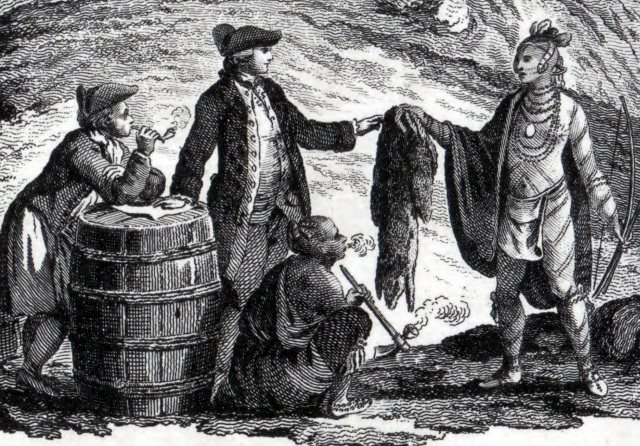Are there any indigenous grapes in the New World?

Have you ever wondered, in the middle of night as you stare at the ceiling and try to ignore the cat scratching at your bedroom door, why all the grapes from Chile, Argentina, Australia and the USA are the same as the ones from France in particular, plus Italy & Spain? Of course you have, who hasn’t?
Is there life beyond the immigrant Cabernets, Chardonnays, Sauvignons & Pinot Noirs?
Where people already making wine-like drinks before the Europeans muscled their way into their countries?
Yes, a little & probably no are the short answers!
All wine we drink on a daily basis comes from one species of vine, Vitis Vinifera. This is native to Europe, northern Africa and as far east as Iran, and as such is completely intertwined with the history of wine here. It produces fruit perfect for fermentation and produces wines that are considered extremely palatable.
As the explorers, traders, invaders and missionaries spread out from Europe, they took their vines with them. In 1652, the Dutch East India Company planted the first vines in South Africa to supply fresh fruit and wine to their ships trading the Spice Route.
The Spanish Conquistadors & Jesuit missionaries brought vines for communion wine to Chile & Argentina in the mid 1500s.
In Australia, the governors of the penal colonies and other settlers first brought vines with them in the late 1700s.
In New Zealand, a Brit, James Busby, planted vines in 1836 to supply the local soldiers, closely followed by more French missionaries desperate for more communion wine!
Most intriguing here, is the history of wine in the USA.
The Vikings called it “Vinland” because of the sheer number of native vines they found, and in the 1560s the Huguenot settlers made their first wine from a local grape with the glorious name of Scuppernong. Why don’t we quaff gallons of this stuff, you ask? Well this is nub of things. The species of vine this belongs to is Vitis Labrusca, and as those poor settlers discovered, it produces wines that taste weird to European palates, with flavours described as “foxy” i.e. a sweet, musky, earthy aroma, quite different and distinct to Vitis Vinifera. The clamour for the familiar flavours of home won the day.
Did the native population make wine?
There’s surprisingly little evidence for the tribes sitting down for a cheeky glass of Scuppernong to wash down a slow-roasted buffalo wing (never knew they had wings, and why so small?).
Alcohol was produced, from grains and various berries and fruits and honey, but more for religious & ceremonial purposes rather than social. What would the religious in any society do without alcohol? It does seem to go hand in hand!
To be fair, I think we’ve all had ecstatic visions after one or two gin and tonics….
On other continents, there’s some evidence to suggest Argentina’s 3 types of Torrontes are somehow distinct from their European cousins, and jumping over to Japan, the Koshu white grape shares little DNA with European vines, but could be a cross between Vitis Vinifera and a wild Chinese vine, and tastes pretty citrussy and fresh, I may add.
To finish off, let me tell you about a US indigenous variety called Mustang which according to a local description “has little or no commercial appeal, being bitter and highly acidic. Even handling the berries can irritate the skin!” Yikes! It has apparently been used to make Mustang wine since before the US Civil War but I’m going to stick to a safe glass of Vitis Vinifera tonight!!
